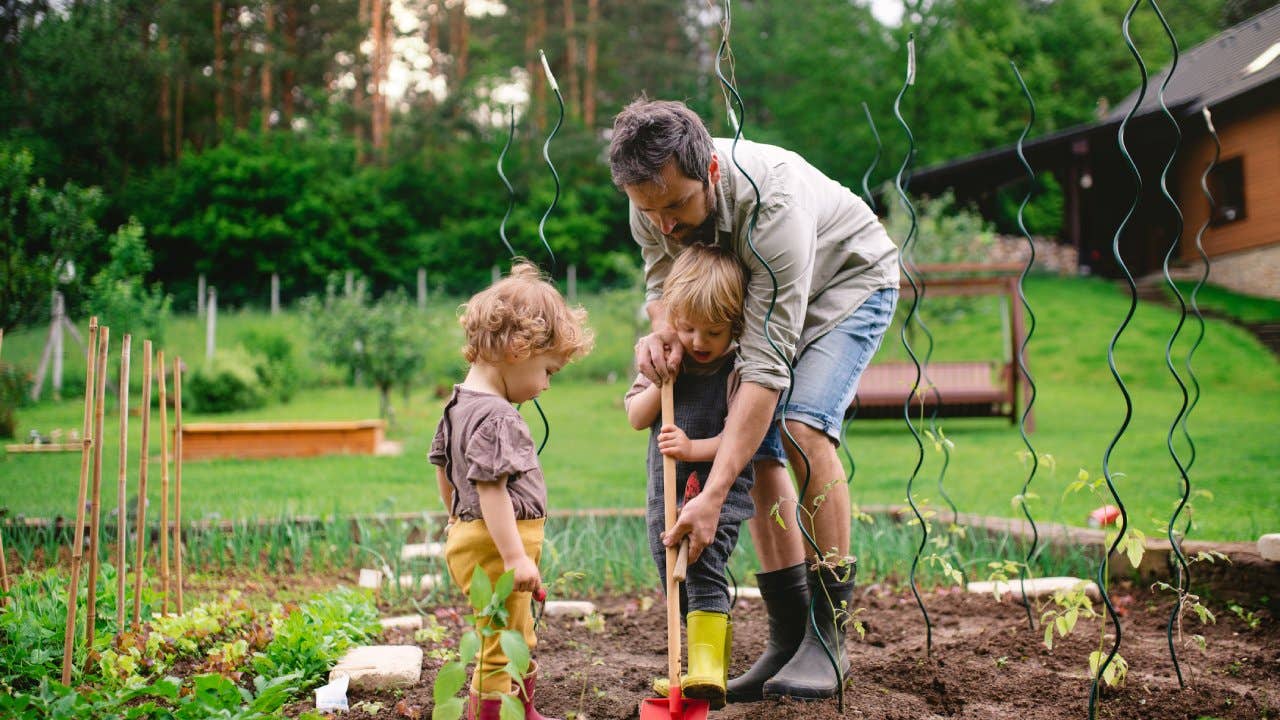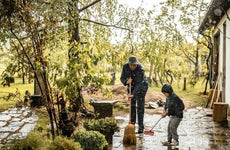6 outdoor DIY projects to tackle this summer

The Bankrate promise
At Bankrate we strive to help you make smarter financial decisions. While we adhere to strict , this post may contain references to products from our partners. Here's an explanation for .
Life moves outdoors in the summer – and that includes DIY projects. The warm weather is ideal for doing certain types of remodels, renovations and other home improvement activities al fresco.
Here are six DIY outdoor projects you should consider tackling this summer, both to enhance your home’s eye appeal and for your own enjoyment.
Outdoor project 1. Create a window box
To instantly transform your home’s exterior, “I recommend creating a window box to showcase one’s eye-catching botanicals,” says Shoshanna Shapiro, owner and principal designer at Sho and Co., a Washington, D.C. interior design firm. “It can truly enhance an outdoor space.”
You can build your own, if you’re handy with woodworking, or buy a ready-made one. Shapiro especially likes boxes made of cedar, which is lightweight but long-lasting, and naturally impervious to damp and insects.
Whatever the wood, “it’s important to carefully select blooms that can withstand the growing conditions around your window, like petunias, geraniums, and begonia,” Shapiro explains. “Treat it with a finish that aligns with the color palette of the outdoor furniture and is resistant to outdoor elements.”
Outdoor project 2. Refresh the front door
Another simple project that can change the look of your home is painting the front door. “Once you have selected your color, it’s time to purchase paint and primer. Make sure both are appropriate for exterior use and for use with each other,” Kevin Busch, VP of operations for Mr. Handyman, advises.
He recommends painting on a dry, sunny day with moderate temperatures. “Start by removing your door’s hardware and wiping down the door with a wet rag — and if needed, you can also sand any rough spots or places with loose paint.”
When the door is clean and dry, apply a coat of primer. Busch recommends using a combination of brushes and rollers, depending on your door style, to ensure you can reach those little recessed areas. “Once the primer is completely dry, add your first coat of color using the same technique, and follow the same process to add additional coats, as needed.”
And while you’re at it, maybe rethink the door handles and knocker? Michael DiMartino, senior vice president of installations at Power Home Remodeling, a national contracting firm specializing in exteriors, says changing out the hardware can help update the door’s appearance and make it look more modern.
Outdoor project 3. Build a fire pit
Summer may seem a strange season to use a fire pit (entirely too hot, unless you live in a clime where it gets nippy at night). However, it’s the perfect time to build one. “With a fire pit, you can extend the life of your backyard, and make it not just a summer hangout spot, but a consistent option for hosting guests and enjoying your outdoor area throughout the year,” explains Sarah Gaffney, design and development director at Next Stage Design in San Jose, Calif., a design firm specializing in outdoor projects.
You can get a ready-made fire pit (essentially a big bowl), set up a fire pit table, or build one of your own. Doing it totally from scratch can be an effort, but you can also create a quite nice one, complete with a rock or stone ring, from a prefab kit. “The amount of involvement really depends on the project, but there are enough options to choose your level of effort,” Gaffeny says. “Some pre-made kits can be set up in one weekend.”
Outdoor project 4. Develop your green thumb
Lindsay Pangborn, gardening expert at plant provider Bloomscape, recommends gardening as a great summer-long DIY project for yourself and your family. “By adding colorful foliage and fresh blooms to your outdoor space, you and your family can take on this project as another way to refresh your home together.”
The best outdoor spaces cater to all five senses. Flowers and shrubs add eye appeal, of course. In addition, “fragrant plants like gardenia, lavender, and scented geraniums can scent the air while providing beautiful blooms,” she says. “Edible plants like pineapples and mint can pull double-duty as beauty and utility, since they make great garnishes for drinks.” (Talk about literally enjoying the fruits of your labor.)
In addition, she says that gardening can provide other benefits. Not only does it get you out in the fresh air, “gardening can also be a great way to exercise your sensory development and boost motor, emotional, and cognitive skills since there is plenty of interaction and strength needed to get the job done.”
Gardens don’t have to cost a lot to install. But “set yourself up for success by picking up critical care items along with plants,” Pangborn advises. “We recommend gardening gloves, pruners, fertilizer, a good watering can, and pest control set.”
Outdoor project 5. Install a greenhouse
Architect Nina Edwards Anker, associate AIA at Brooklyn, NY-based nea studio, has a neat idea to go along with that garden: Install a prefab classic glass greenhouse, using a kit that supplies simple metal or wood framework and glass (or plastic) walls and ceiling. It doesn’t much matter what the design of your house is. “It will seamlessly integrate since it is transparent and timeless in architectural style,” she says.
The feasibility of a greenhouse does depend on the amount of outdoor space you have. But modern greenhouses come in a variety of sizes and can do double-duty: They aren’t just for plants anymore. “Ideally you have time to be a gardener, but either way, you can always furnish it with a table and chairs to use it as a sunroom/breakfast room,” Anker notes.
Outdoor project 6. Paint outdoor furniture
If you have wooden and/or wicker outdoor furniture, Matt Kunz, president of Five Star Painting, a national contracting firm, recommends painting and staining these pieces as an easy DIY project.
The first step is to clean the furniture. “You will likely have mold or mildew stains or other kinds of stains that need to be cleaned with a water and bleach solution or any of the spray-on and hose-off cleaner solutions you can find from home improvement and paint stores,” he says. He recommends going over both the top and bottom of the furniture, and be sure to allow the furniture to dry thoroughly.
Next is surface prep, which entails sanding the surfaces to remove loose paint and rough surfaces.
“In many cases, your old finish won’t need much hand sanding, but if it does, an orbital hand sander will save time and do a good job on flat surfaces.” (Fortunately, he says wicker usually does not need any sanding at all.) “Follow this with priming if needed using an all-purpose primer if using a solid stain or paint, but not if staining with any semi-transparent stain.”
When staining, Kunz recommends solid “deck-rated” stains for outdoor furniture because they are durable and are applied with a brush and roller. “Optional ways of applying paint are with aerosol cans and many of these have primer included, which is especially good for painting metal furniture to fight rust,” he says. “If possible, let the furniture dry in a dust-free area (such as a garage) to avoid dust and insects landing on the surfaces until they are no longer sticky.”
Related Articles




Spring cleaning checklist: home maintenance projects to tackle